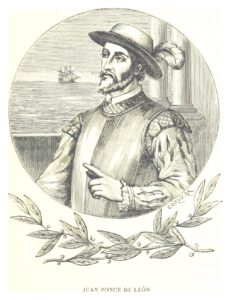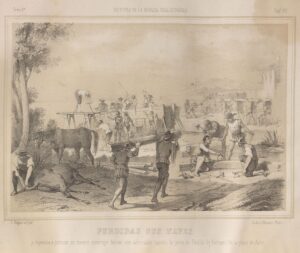The Story of Marco Island, Part 2: The Arrival of the Spaniards
In Part 1, we explored Marco Island’s history with their earliest known inhabitants – the fierce and resourceful Calusa, who dominated Southwest Florida’s coast for centuries. Now we turn to the 16th-century arrival of Spanish explorers on Marco Island’s shores, a dramatic encounter that forever altered the island’s trajectory. This next chapter uncovers how first contact with Europeans reshaped life on Marco Island, introducing new conflicts, cultures, and transformations that would reverberate for generations.
First Encounters on La Florida
In 1513, Juan Ponce de León became the first recorded European to land in Florida. Sailing down the Gulf coast, he is believed to have reached the southern end of Marco Island, a place the Calusa called Caxambas, meaning “fresh water.” The Spanish renamed it San Marco Island, a name that would evolve into today’s Marco Island.
Relations between the Calusa and the newcomers quickly soured. The Calusa were powerful, defensive, and well aware of European intentions.

By 1517, when Spanish sailors came ashore to gather water, Calusa warriors ambushed them, wounding six men and driving the rest back to their ships. It was one of the earliest battles between Europeans and the Calusa—and the Calusa decisively prevailed.
When Ponce de León returned in 1521 with settlers hoping to establish a colony, the Calusa attacked once again. In the fighting, Ponce was struck by a poisoned arrow and later died from his wound. These encounters cemented the Calusa’s reputation as “fierce people” unwilling to submit to foreign rule.
A Fragile Alliance
Despite repeated setbacks, Spain continued its efforts. In 1566, Governor Pedro Menéndez de Avilés, founder of St. Augustine, met the Calusa chief—recorded as King Carlos (Caalus)—and sought an alliance. To seal the pact, Menéndez even married the chief’s sister, Doña Antonia.
Soon after, the Spanish constructed Fort San Antón de Carlos on Mound Key, near the Calusa capital. It became one of the first Jesuit missions in North America and the only Spanish fort ever built on a shell mound. Archaeological evidence of Spanish pottery, beads, and lime cement still remains on the site today.

For a brief time, the Calusa and the Spaniards coexisted. Accounts describe feasts of roasted fish and seafood hosted by the Calusa for their new allies. But tensions soon mounted. The Spanish pushed conversion to Christianity, while the Calusa grew wary of foreign soldiers in their midst. Within just a few years, violence erupted. King Carlos, his heir Felipe, and other nobles were killed, and by 1569 the Spaniards abandoned the fort. The Calusa had once again driven them out.
Decline of the Calusa
Though victorious in battle, the Calusa faced new, invisible enemies. Diseases like smallpox and influenza spread through native trade networks, weakening their population. In the early 1700s, British-backed tribes from the north—armed with muskets—raided Florida for slaves. The Calusa, without firearms, suffered devastating losses.
In 1711, a Spanish ship evacuated about 270 Calusa survivors to Cuba. Many died soon after arrival. By 1763, when Spain ceded Florida to Britain, the last Calusa families were relocated from the Keys to Havana. The once-powerful “Shell Indians” were gone, their kingdom extinguished by war, disease, and exile.
Marco Island After the Spaniards
With the Calusa gone, Marco Island entered a period of silence. By the late 1700s, Cuban fishermen established seasonal ranchos along the coast, harvesting fish and charcoal for trade. The Spanish name “San Marco” remained on maps, preserving the memory of early contact.
What the Spaniards left behind was not lasting settlements, but rather a legacy of disruption. Marco Island, once the heart of the Calusa’s domain, was now nearly uninhabited—waiting for the next wave of pioneers to rediscover its shores.
—
In Part 3, we’ll journey into the folklore and mystery that surrounds Marco Island’s “quiet years.” From whispered tales of pirate treasure hidden in the Ten Thousand Islands, to smugglers and wreckers navigating the Gulf’s treacherous waters, this next chapter blends Marco Island’s history and legend. Whether fact or fable, these stories continue to shape the island’s identity and capture the imagination of all who visit.





